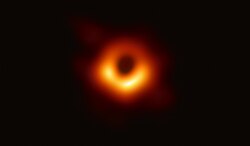 Artist's impression and size comparison with Earth and Mars | |
| Discovery [1] | |
|---|---|
| Discovery date | March 2019 |
| Transit | |
| Orbital characteristics [2] | |
| 0.02191+0.00080 −0.00084 AU | |
| Eccentricity | 0.103+0.117 −0.045 |
| 2.2531136+0.0000012 −0.0000015 d | |
| Inclination | 87.71°+1.16° −0.44° |
| Semi-amplitude | 0.56±0.16 m/s [3] |
| Star | L 98-59 |
| Physical characteristics [2] | |
| 0.850+0.061 −0.047 R🜨 | |
| Mass | 0.47+0.13 −0.15 M🜨 [3] |
Mean density | 4.3+1.2 −1.9 g/cm3 [3] |
| Temperature | 627+33 −36 K (354 °C; 669 °F, equilibrium) |
L 98-59 b is an exoplanet having a size between that of the Earth and Mars and a mass only half that of Venus. [2] It orbits L 98-59, a red dwarf star 34.6 light-years away in the constellation Volans. There are at least 4 (possibly 5) other planets in the system: L 98-59 c, d, e, f and the unconfirmed ".06". [2] [4] Its discovery was announced on 27 June 2019 in The Astronomical Journal [1] and in a NASA press release. It was the smallest planet discovered by TESS [5] until the discovery of LHS 1678 b, [6] and was the lowest-mass planet whose mass had been measured using radial velocities [2] until Proxima Centauri d was found in 2022. [7]


